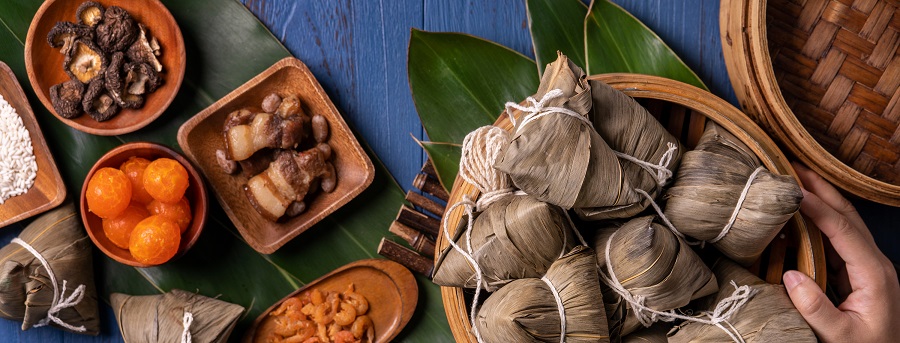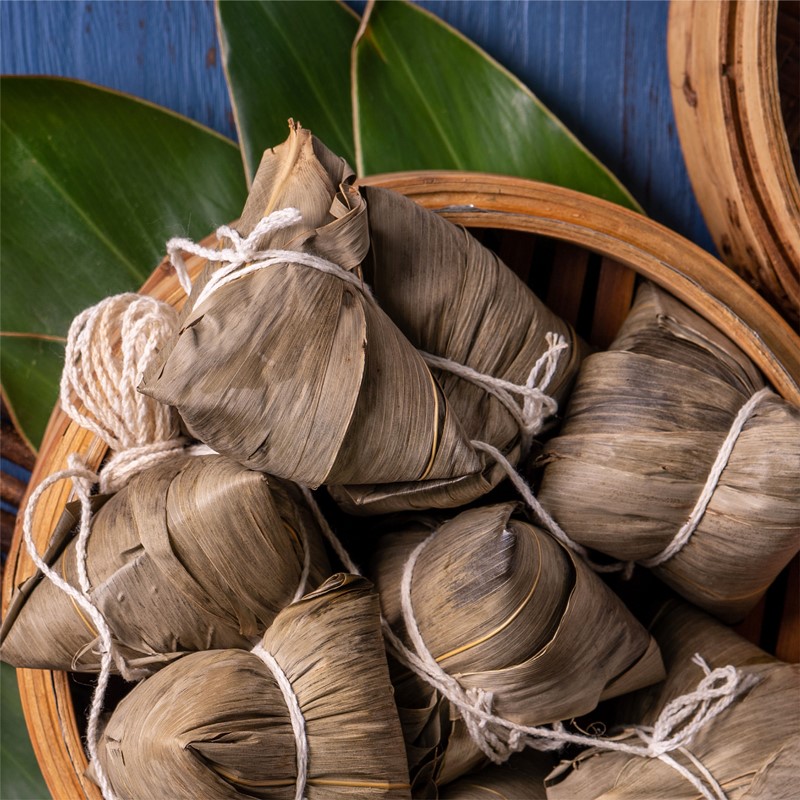
As part of one of the oldest civilizations in history, Chinese cuisine has had centuries to cultivate and refine itself. It is estimated that Chinese cuisine truly formalised itself in the 15th century during the Shang dynasty. That’s over 600 years ago! Naturally, foods with special meanings became associated with different festivals.
You might have noticed little pyramid shaped sticky rice dumplings wrapped in bamboo leaves – called Zongzi, or Bak Chang by those using the Hokkien dialect – making an appearance during the Dragon Boat Festival. They can be eaten in two forms, sweet or savoury. There are different types of fillings from one dumpling to another, but the most typical fillings are egg yolk, lotus seeds and red bean paste for sweet dumplings, while savoury dumplings usually have ham, chestnuts and fatty pork.
So how did eating these tasty treats during the Dragon Boat Festival come about? The custom originated from 340 AD, when a Chinese poet named Qu Yuan who lived during the Warring States Era, drowned himself in a river so that his act will spur his King into action and save their state from invasion. To repay him for his sacrifice, people threw Zongzi into the river to feed the fish and protect Qu Yuan’s body from being eaten. Since then, these dumplings have become the food most associated with Dragon Boat Festival, and one of the iconic in Chinese cuisine.
Copyright Statement This article and video is original content created by Xiao En website, to whom the copyright belongs to. The content should not be reproduced without permission, otherwise it will be regarded as infringement. Xiao En reserves the right to pursue legal action against unauthorised use of the content.



